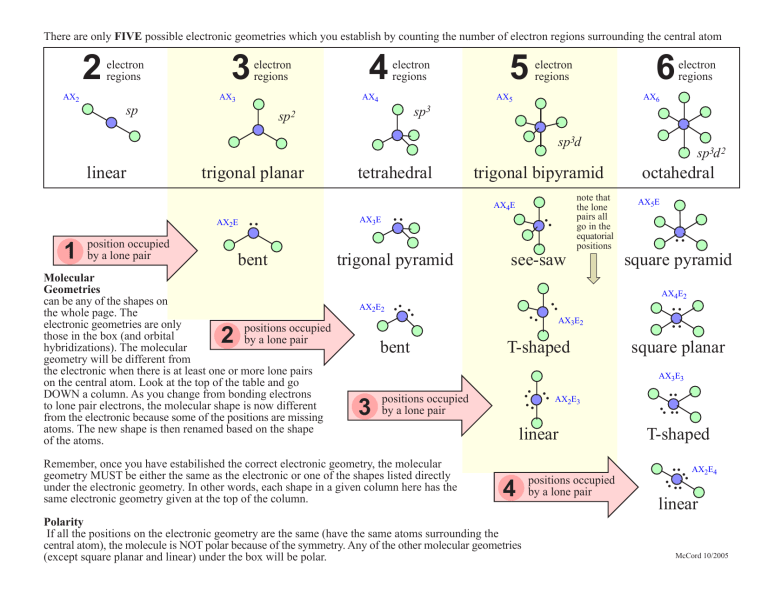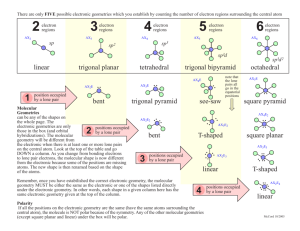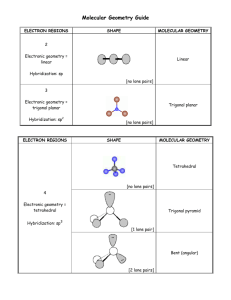
There are only FIVE possible electronic geometries which you establish by counting the number of electron regions surrounding the central atom 2 electron regions AX2 3 electron regions AX3 4 electron regions AX4 sp 5 6 electron regions AX5 electron regions AX6 sp3 sp2 sp3d bent trigonal pyramid 2 bent octahedral AX5E .. square pyramid AX4E2 .. .. AX2E2 note that the lone pairs all go in the equatorial positions see-saw .. AX3E2 T-shaped .. .. square planar AX3E3 linear 4 Polarity If all the positions on the electronic geometry are the same (have the same atoms surrounding the central atom), the molecule is NOT polar because of the symmetry. Any of the other molecular geometries (except square planar and linear) under the box will be polar. positions occupied by a lone pair .. .. T-shaped .. .. AX2E4 .. .. Remember, once you have estabilished the correct electronic geometry, the molecular geometry MUST be either the same as the electronic or one of the shapes listed directly under the electronic geometry. In other words, each shape in a given column here has the same electronic geometry given at the top of the column. AX2E3 .. 3 positions occupied by a lone pair .. Molecular Geometries can be any of the shapes on the whole page. The electronic geometries are only positions occupied those in the box (and orbital by a lone pair hybridizations). The molecular geometry will be different from the electronic when there is at least one or more lone pairs on the central atom. Look at the top of the table and go DOWN a column. As you change from bonding electrons to lone pair electrons, the molecular shape is now different from the electronic because some of the positions are missing atoms. The new shape is then renamed based on the shape of the atoms. .. AX3E AX4E .. 1 position occupied by a lone pair .. trigonal bipyramid .. AX2E tetrahedral .. trigonal planar .. linear sp3d 2 linear McCord 10/2005




